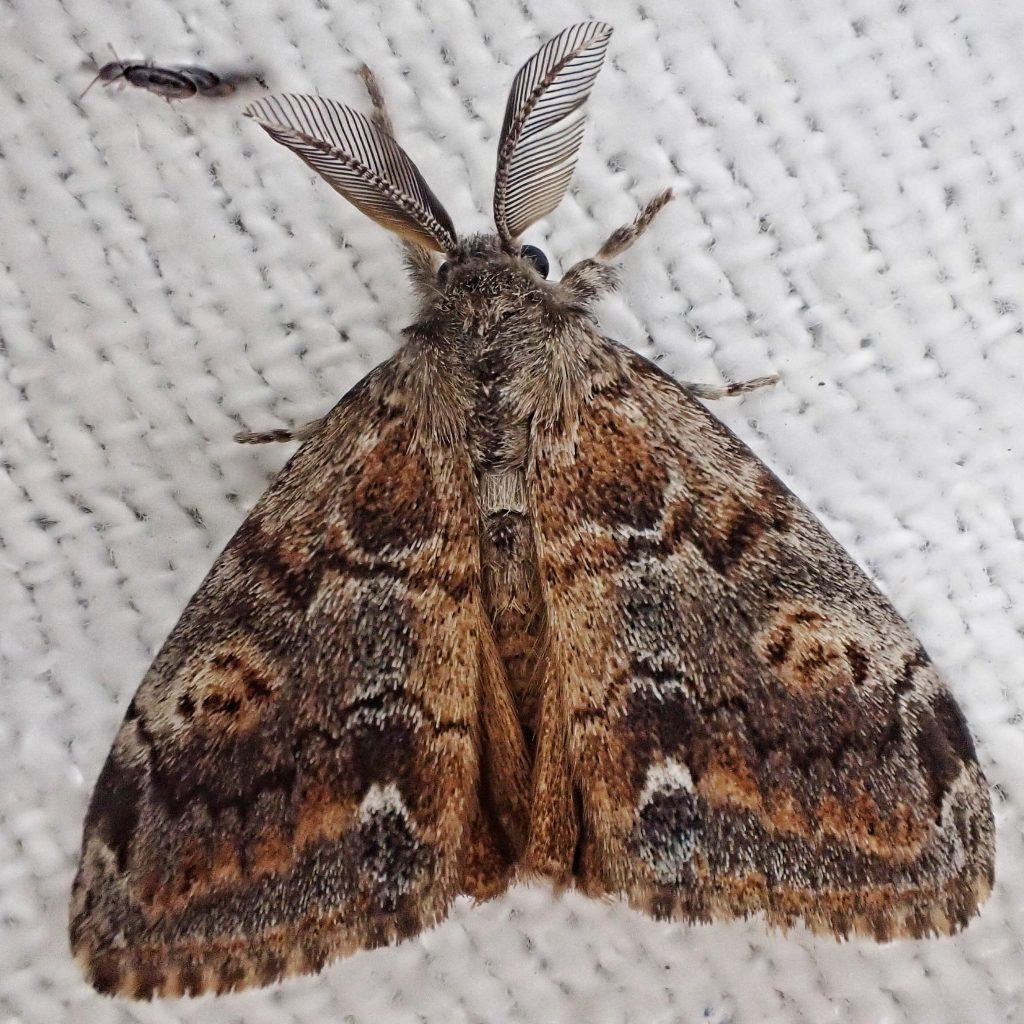
When I was mothing down at the Vancouver Lake bottoms in Clark County, Washington (as I described in 2nd Night of Moth Week) I had some tussock moths come in that I assumed were Orgyia pseudotsugata, because I thought that that was the only species of Orgyia that looked like that in that area. But there was one that looked a little different. It was a bit more colorful, but I have finally learned that color is the most variable of moth characteristics, and this one also seemed very fresh, which often makes moths look more vivid. But it was so pretty that I decided to take it home, refrigerate it, and get some photos in a more controlled setting with my home TG 6 that still has an unscratched lens. After I did so and admired the photos, I released the moth and more or less forgot about it.
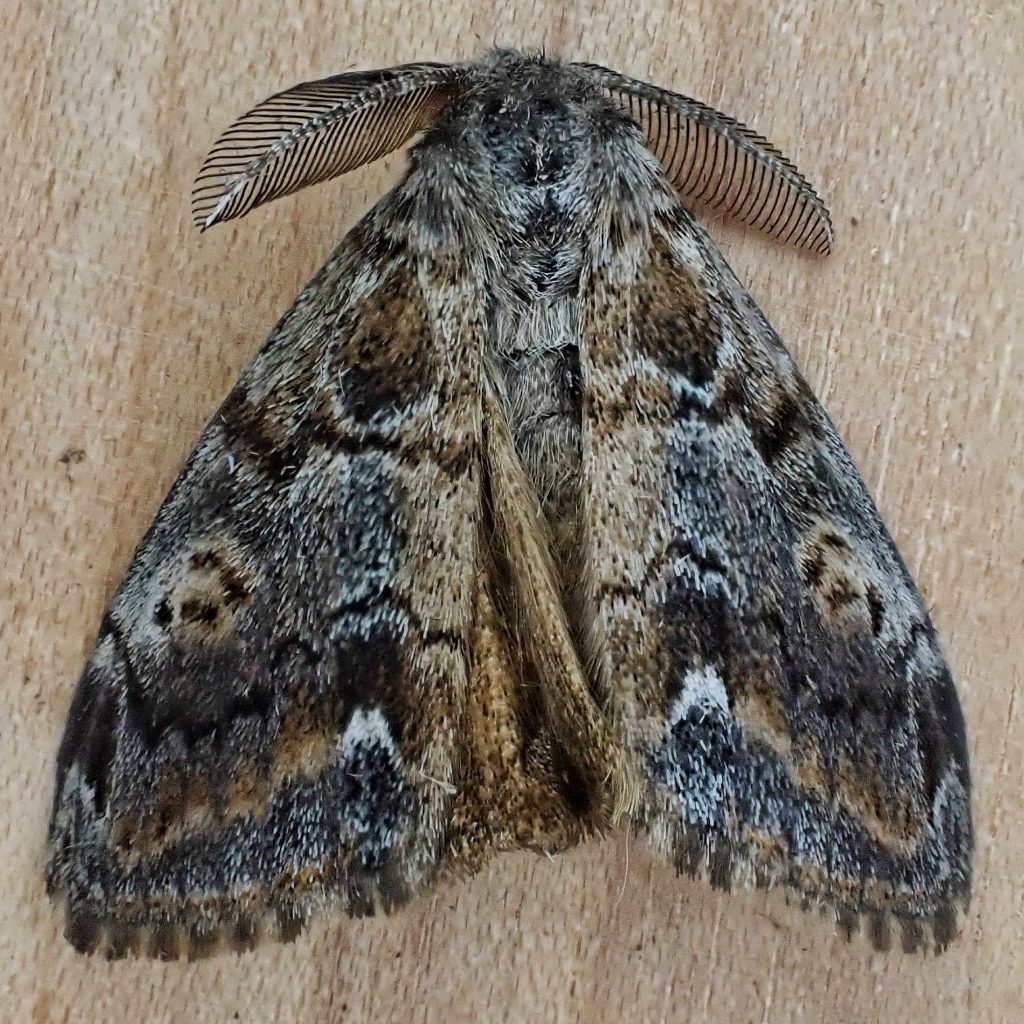
Until I started going back through all of the photos I’d taken during moth week and, prompted somewhat by the photo comparisons I had done to confirm another Orgyia as antiqua, realized that something was definitely different about this moth than the usual Orgyia pseudotsugata. I soon realized that what it really looked like was Orgyia vetusta, but that couldn’t be right because, according to PNW Moths, O. vetusta isn’t found north of southern Oregon. But wait a minute, there was a dot on the MPG map near Portland, and a caterpillar from Portland in 2017 that had been identified as O. vetusta on BugGuide. So I sent some photos to Tomas Mustelin, fully expecting him to say ‘you don’t know your Orgyia from a hole in the ground’.
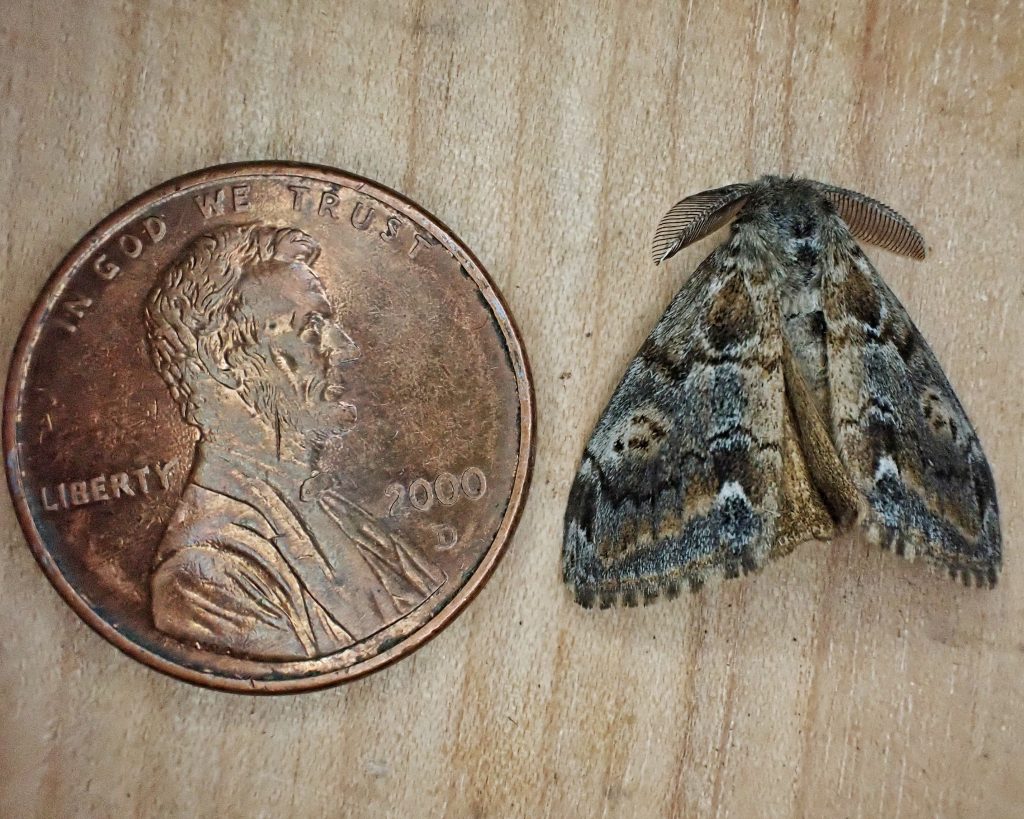
But instead he confirmed my identification, confirmed that it was the first Orgyia vetusta to be found in Washington state, and alerted Lars Crabo to this find (Lars is the creator and builder, along with Merrill Peterson, of the PNW Moths site, and the man who keeps the records for moths in the PNW. He was also kind enough to tell me that the first time he found O. vetusta in sw Oregon he had also assumed that they were O. pseudotsugata). All of which just goes to show that one needn’t be an expert to expand our knowledge of the natural history of our planet. All that’s really required is that one needs to show up, and pay attention.
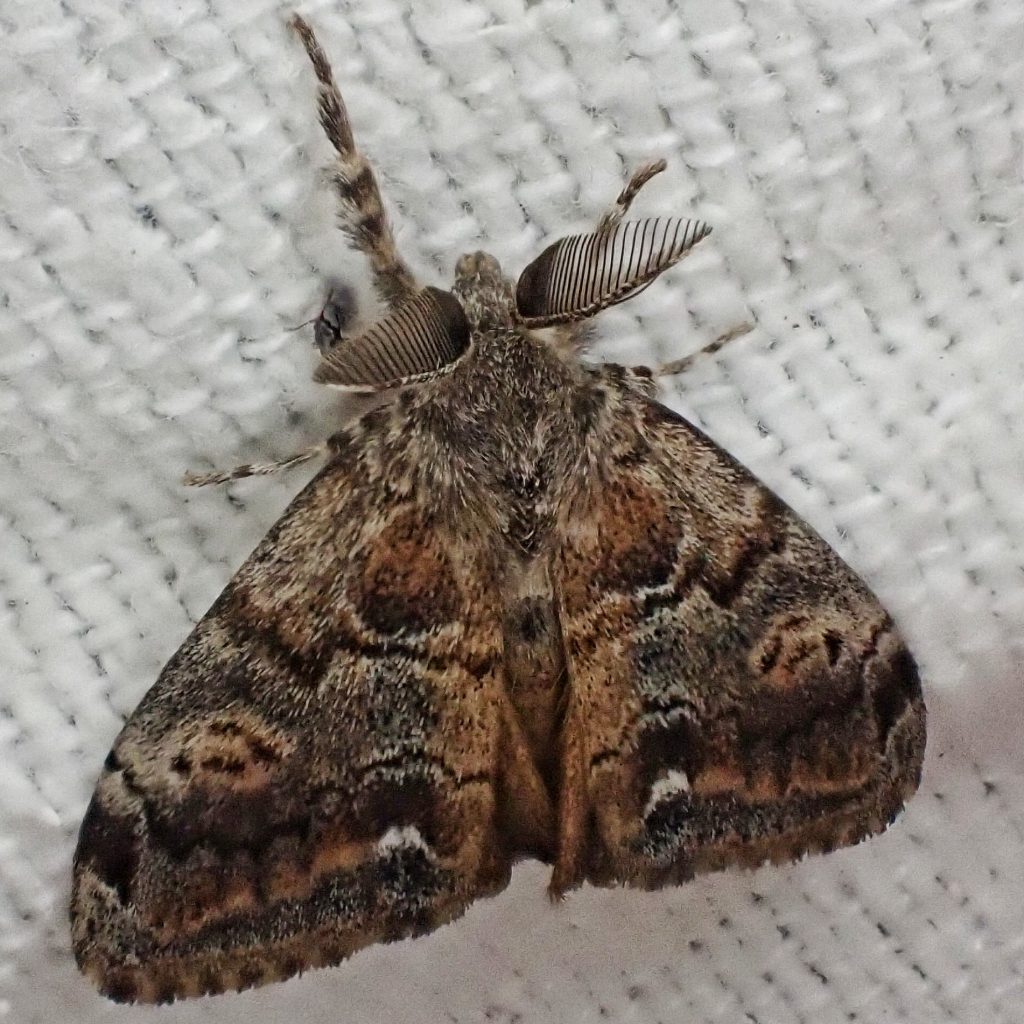
There is really no way of knowing how this interesting and beautiful member of the family Erebidae got here. It may have been transported accidentally, and it may be a one-off. Or there may have been several, who may or may not establish a population. Or it could be that the species is moving north in response to climate change and global warming. That was almost certainly the case with my only other ‘first state record’, that of a Walker’s Darner dragonfly back in 2012. Regardless, I’ll be keeping my eyes open for more of these, and since they seem to be most common in August, I’ll definitely be making at least a few trips back to the Vancouver Lake bottoms to run lights over the next month.
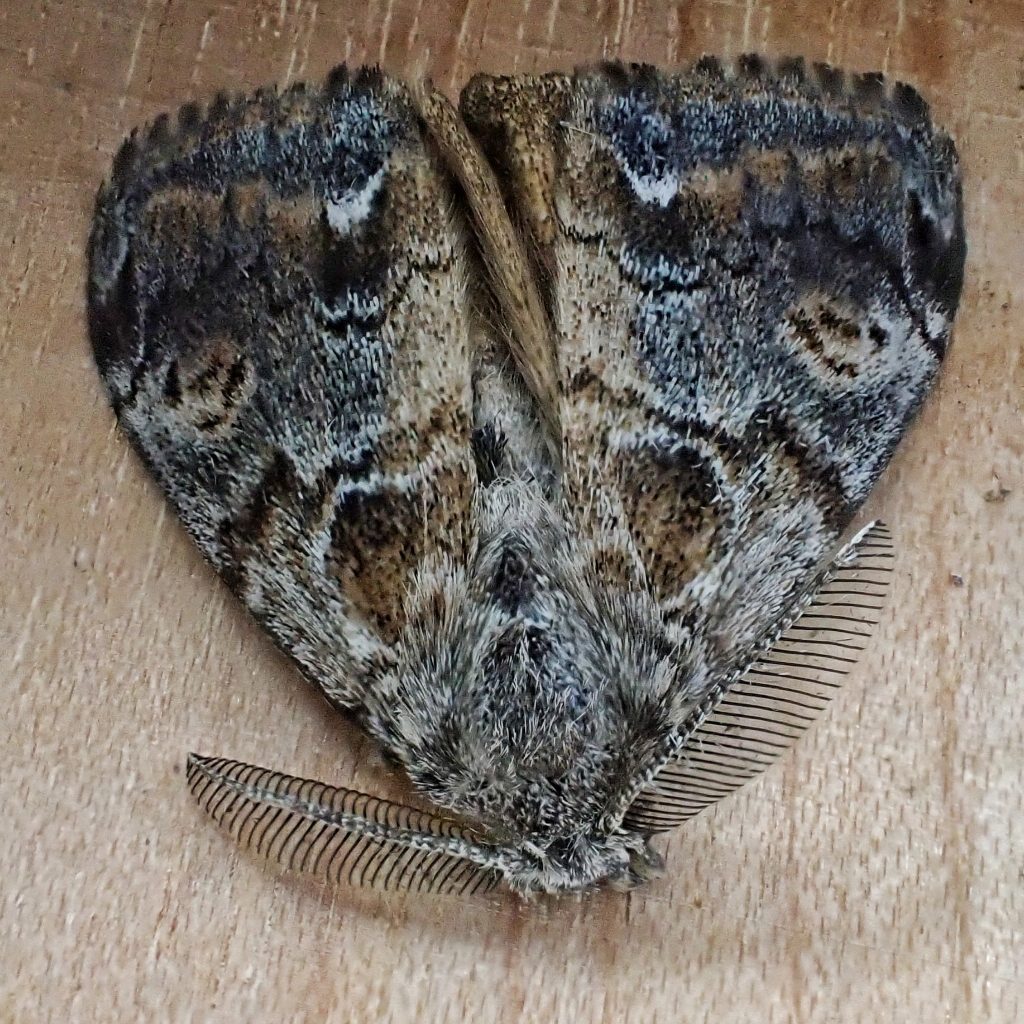
Description– “Orgyia vetusta is a brown, small, rounded-winged moth (FW length 14–15 mm; females lack wings) that flies in southwestern Oregon during the summer and fall. It has a gray-brown forewing with a diffuse pale discal spot, warm brown hindwings, and short broad antennae. The forewing is short and rounded with a blunt apex and convex outer margin. It is usually dark gray-brown except for a large diffuse tan discal spot. Some specimens have hoary gray frosting, but the few specimens examined from Oregon lack this feature. The dark brown antemedial, postmedial, and subterminal lines are obscure except in hoary specimens. A light subanal spot, white to light tan, is located in the posterior subterminal area slightly above the posterior margin. The hindwing is rounded, warm brown with a slight orange case, slightly darker toward the margin. The head and body are dark gray-brown. The male antenna is short and broadly bipectinate. The female has vestigial pad-like wings and is heavy-bodied and nondescript.” PNW Moths | Orgyia vetusta
Similar species– “It is most likely to be confused with Orgyia cana. However, O. cana is usually more blue-gray on the forewing and has gray-brown hindwings that lack a warm cast. Orgyia vetusta also resembles the more widespread species Orgyia pseudotsugata. It has darker forewings with a straighter lateral margin and brighter rusty brown hindwings with a defined dark marginal band. The females of these species cannot be distinguished reliably.” PNW Moths | Orgyia vetusta
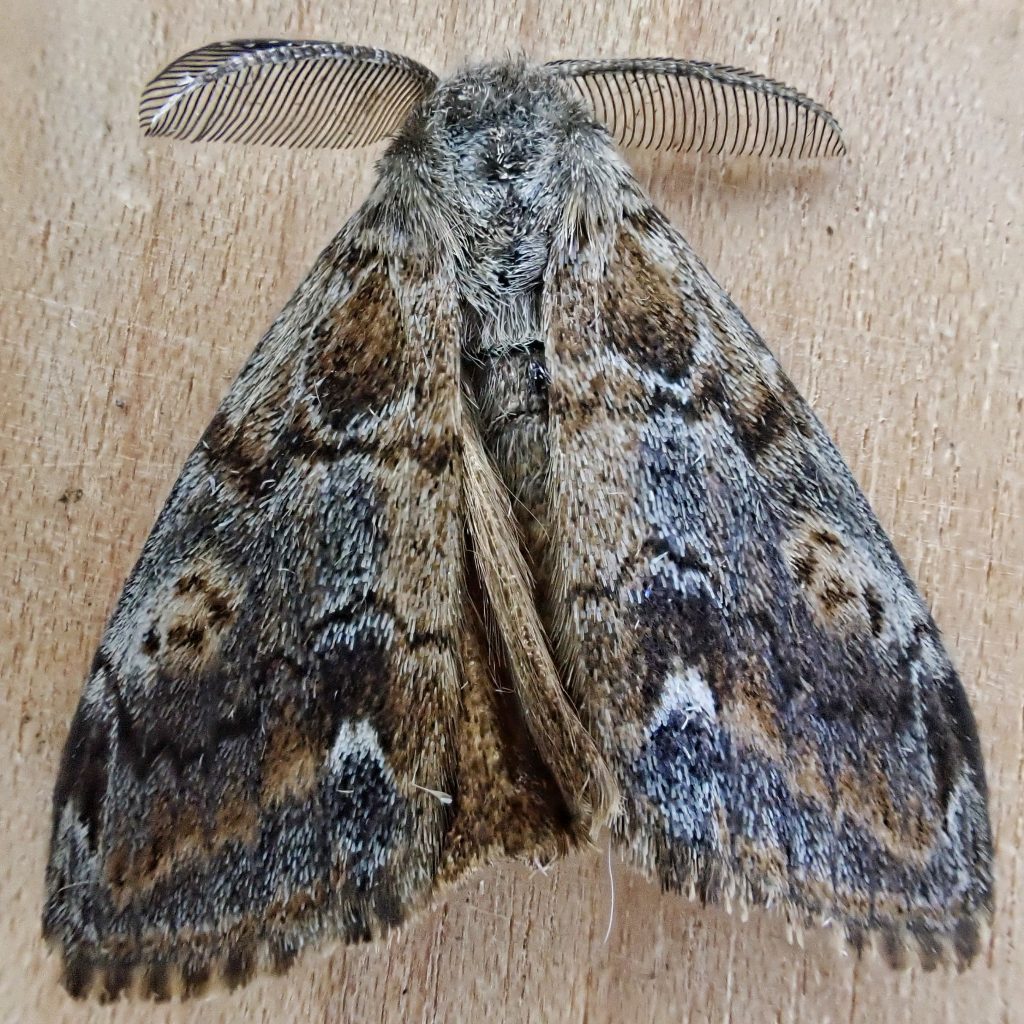
Habitat– Forests and woodlands with oak
Range– “The range of this species extends south through California to the border with Mexico. It is found predominantly near the coast except in the northern Sierra Nevada…” PNW Moths | Orgyia vetusta; formerly known only from the Klamath Mountains, but now known, albeit possibly only temporarily, Clark County, Washington.
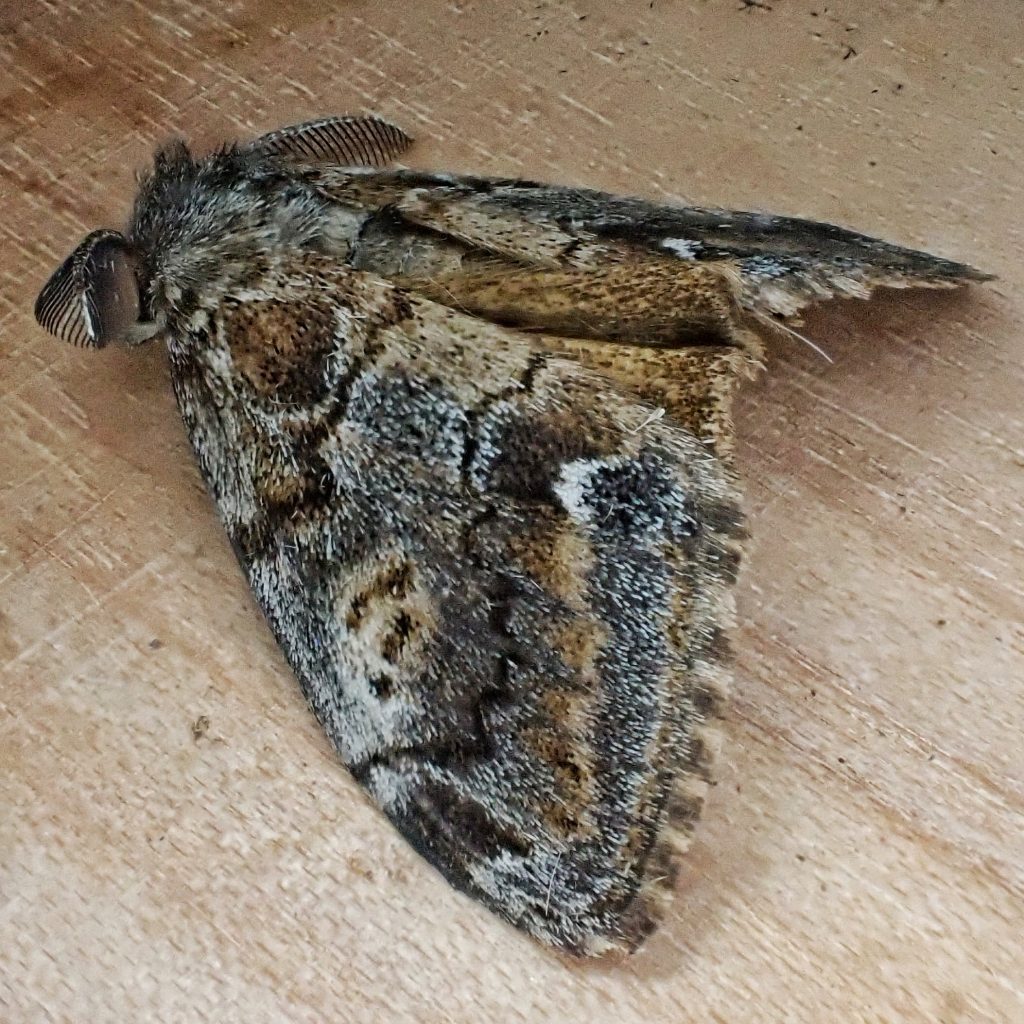
Eats– “The larvae of O. vetusta has been reported to feed on a broad variety of broad-leaved trees and forbs. Ferguson (1978) lists a number of hosts in various plant families, including oak (Quercus spp.), Arctostaphylos, apple (Malus spp.), cherry (Prunus spp.), and lupine (Lupinus spp.). The distribution suggests that oaks may be the preferred foodplant…The larvae of this moth have been reported as a pest on fruit trees in California.” PNW Moths | Orgyia vetusta
Eaten by– The tachinid fly Compsilura concinnata is a known parasitoid, and other tachinids probably also parasitize the larvae; the chalcidoid wasps Eulophus koebelei, Pediobius braconiphagus, Tetrastichus orgyae, Dibrachys microgastri, and Microdontomerus fumipennis are also known parasitoids, and other wasps probably also parasitize the larvae; adults and larvae are probably preyed upon by insectivores of all classes.
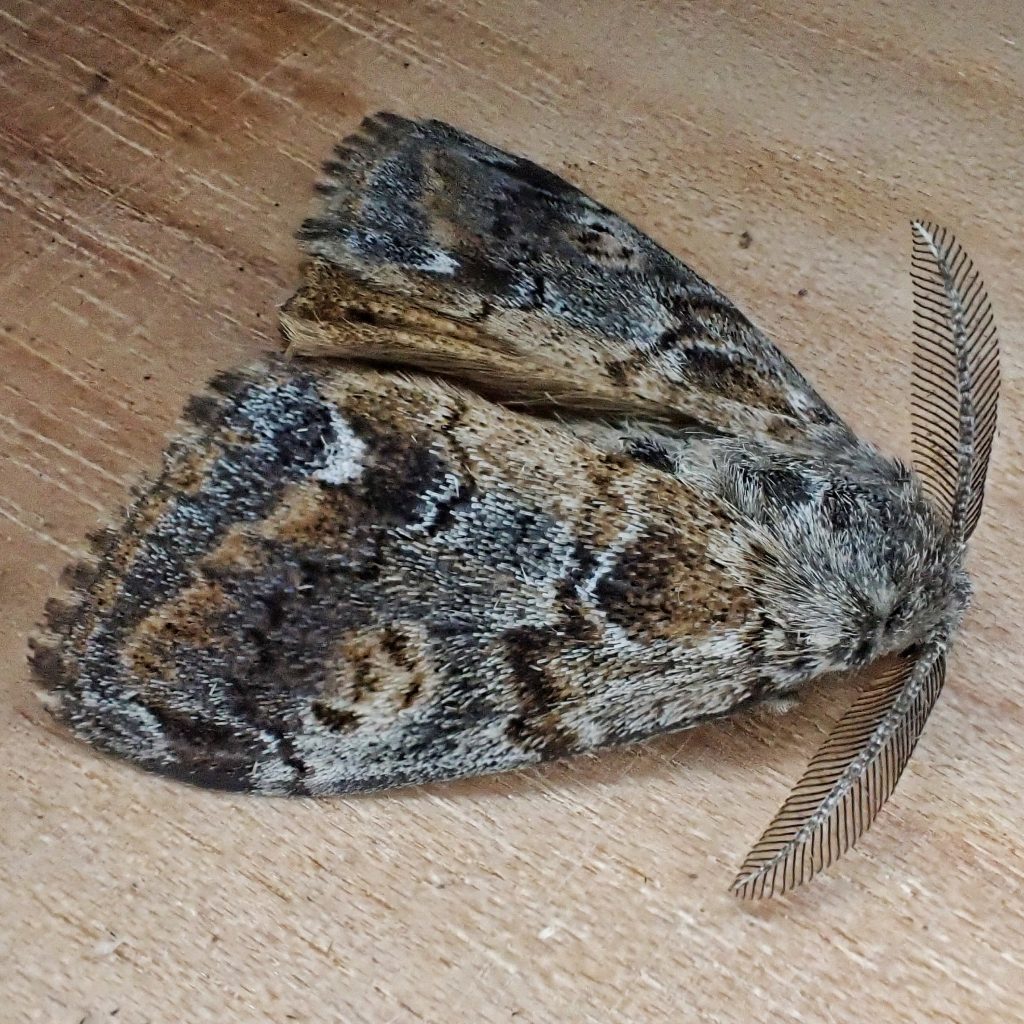
Adults active– Early June, August-September.
Life cycle– “The eggs overwinter, and the larvae hatch when the leaves come out in the spring. Like all other western species of the genus, vetusta appears to have only one generation.” The Moths of America North of Mexico; Fascicle 22.2:Noctuoidea; Lymantriidae; pg 65; Douglas C. Ferguson; 1978
Etymology of names– Orgyia is from the Greek for ‘the reach of the outstretched arms’, and refers to the fact that these moths usually perch with their forelegs extending in front of them. The specific epithet vetusta is from the Latin for ‘old’, and was possibly meant to connotate similarity to, but difference from, Orgyia antiqua, but I cannot verify that because Boisduval didn’t deign to explain himself.
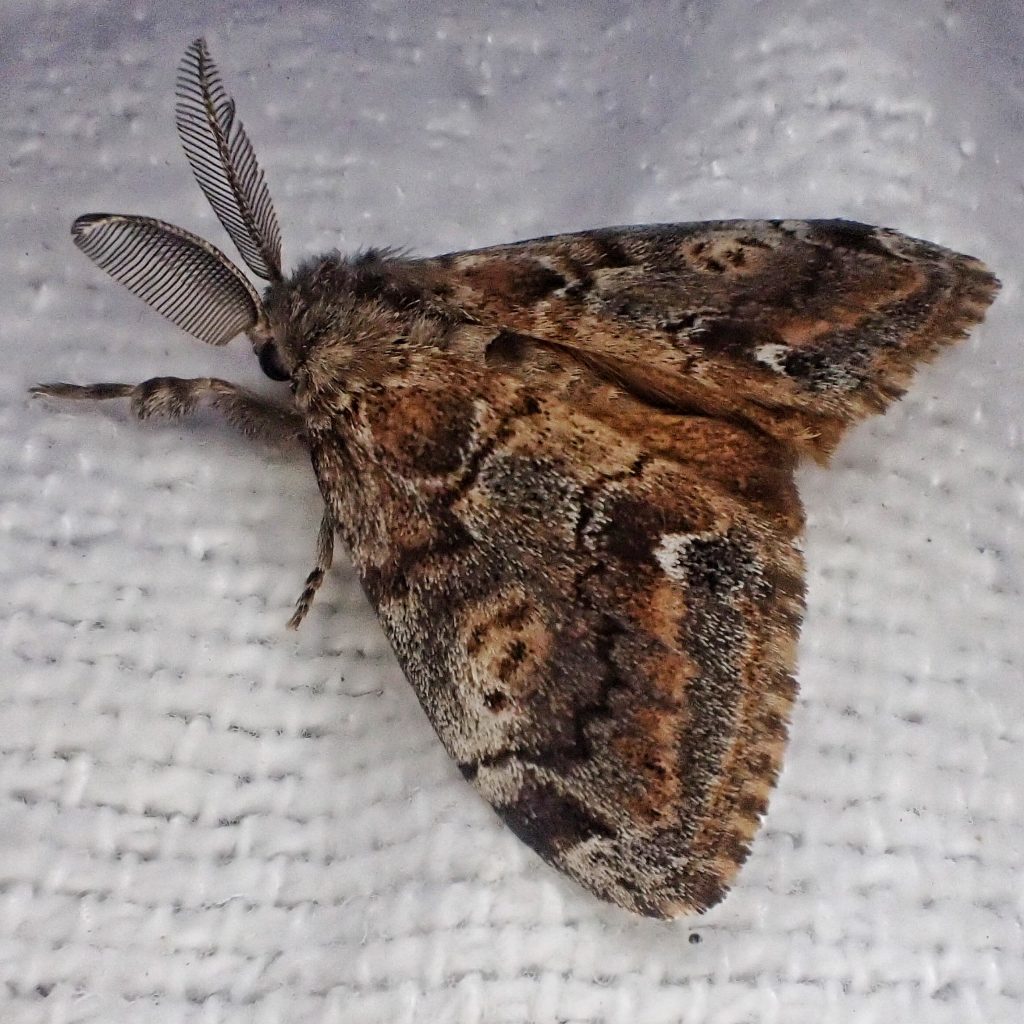
Species Orgyia vetusta – Western Tussock Moth – Hodges#8309 – BugGuide.Net
Moth Photographers Group — Tussock Moth Parasitoids
https://images.peabody.yale.edu/mona/22-2-ocr.pdf
http://mothphotographersgroup.msstate.edu/species.php?hodges=8309
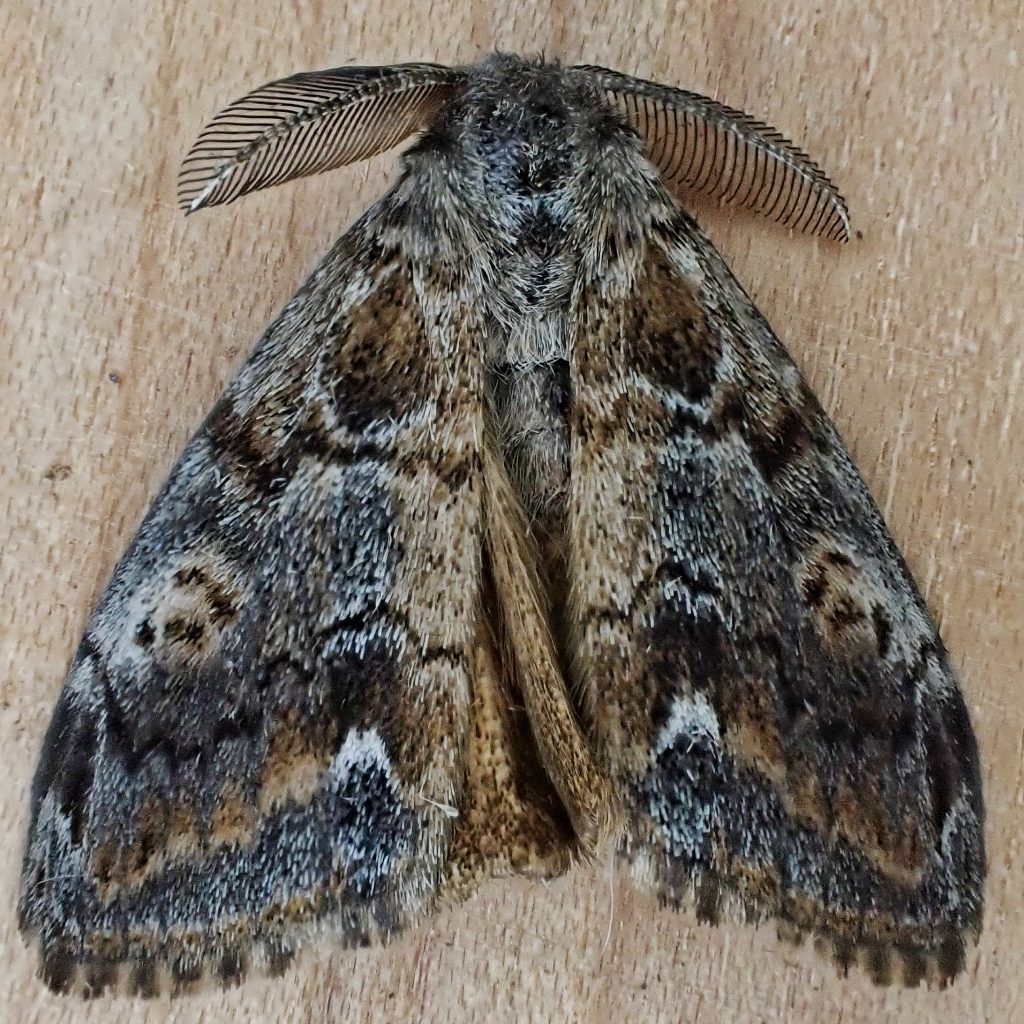
that is a wonderful moth! the antennae!! and so mysterious how it came to be here in Vancover!
It is a beauty, Amanda! And those big feathery antennae help them find the flightless females! It’s been a very cool experience!